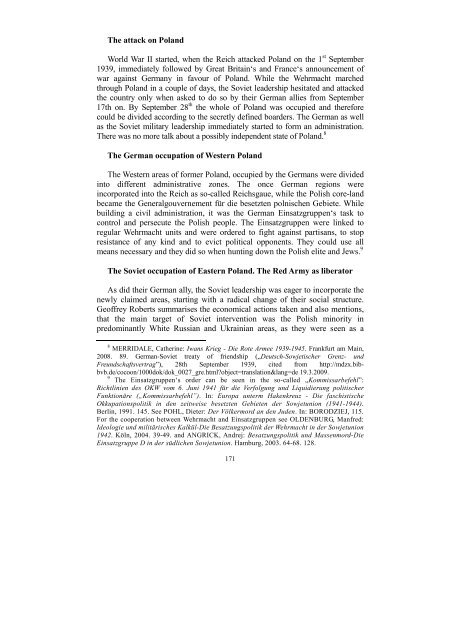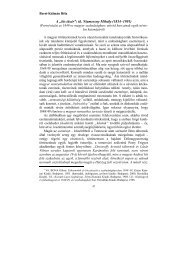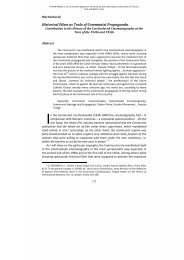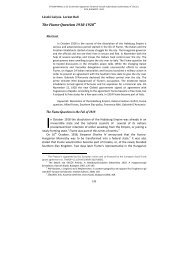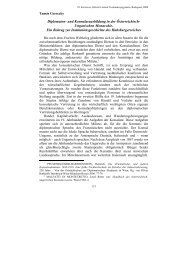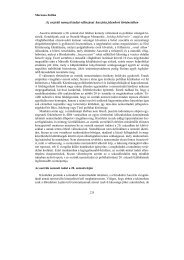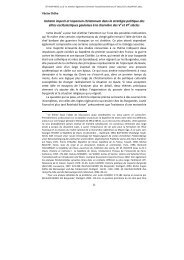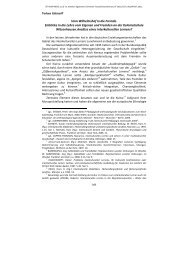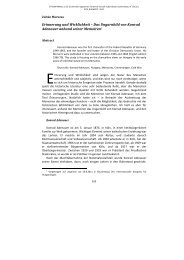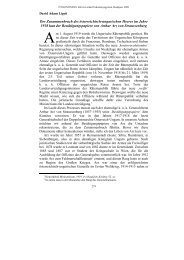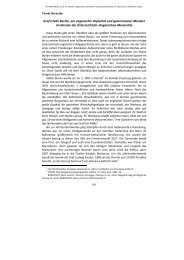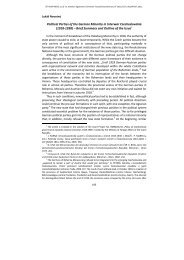The Molotov-Ribbentrop Pact - ELTE BTK Történelem Szakos Portál
The Molotov-Ribbentrop Pact - ELTE BTK Történelem Szakos Portál
The Molotov-Ribbentrop Pact - ELTE BTK Történelem Szakos Portál
You also want an ePaper? Increase the reach of your titles
YUMPU automatically turns print PDFs into web optimized ePapers that Google loves.
<strong>The</strong> attack on Poland<br />
World War II started, when the Reich attacked Poland on the 1 st September<br />
1939, immediately followed by Great Britain‘s and France‘s announcement of<br />
war against Germany in favour of Poland. While the Wehrmacht marched<br />
through Poland in a couple of days, the Soviet leadership hesitated and attacked<br />
the country only when asked to do so by their German allies from September<br />
17th on. By September 28 th the whole of Poland was occupied and therefore<br />
could be divided according to the secretly defined boarders. <strong>The</strong> German as well<br />
as the Soviet military leadership immediately started to form an administration.<br />
<strong>The</strong>re was no more talk about a possibly independent state of Poland. 8<br />
<strong>The</strong> German occupation of Western Poland<br />
<strong>The</strong> Western areas of former Poland, occupied by the Germans were divided<br />
into different administrative zones. <strong>The</strong> once German regions were<br />
incorporated into the Reich as so-called Reichsgaue, while the Polish core-land<br />
became the Generalgouvernement für die besetzten polnischen Gebiete. While<br />
building a civil administration, it was the German Einsatzgruppen‘s task to<br />
control and persecute the Polish people. <strong>The</strong> Einsatzgruppen were linked to<br />
regular Wehrmacht units and were ordered to fight against partisans, to stop<br />
resistance of any kind and to evict political opponents. <strong>The</strong>y could use all<br />
means necessary and they did so when hunting down the Polish elite and Jews. 9<br />
<strong>The</strong> Soviet occupation of Eastern Poland. <strong>The</strong> Red Army as liberator<br />
As did their German ally, the Soviet leadership was eager to incorporate the<br />
newly claimed areas, starting with a radical change of their social structure.<br />
Geoffrey Roberts summarises the economical actions taken and also mentions,<br />
that the main target of Soviet intervention was the Polish minority in<br />
predominantly White Russian and Ukrainian areas, as they were seen as a<br />
8 MERRIDALE, Catherine: Iwans Krieg - Die Rote Armee 1939-1945. Frankfurt am Main,<br />
2008. 89. German-Soviet treaty of friendship („Deutsch-Sowjetischer Grenz- und<br />
Freundschaftsvertrag”), 28th September 1939, cited from http://mdzx.bibbvb.de/cocoon/1000dok/dok_0027_gre.html?object=translation&lang=de<br />
19.3.2009.<br />
9 <strong>The</strong> Einsatzgruppen‘s order can be seen in the so-called „Kommissarbefehl”:<br />
Richtlinien des OKW vom 6. Juni 1941 für die Verfolgung und Liquidierung politischer<br />
Funktionäre („Kommissarbefehl”). In: Europa unterm Hakenkreuz - Die faschistische<br />
Okkupationspolitik in den zeitweise besetzten Gebieten der Sowjetunion (1941-1944).<br />
Berlin, 1991. 145. See POHL, Dieter: Der Völkermord an den Juden. In: BORODZIEJ, 115.<br />
For the cooperation between Wehrmacht and Einsatzgruppen see OLDENBURG, Manfred:<br />
Ideologie und militärisches Kalkül-Die Besatzungspolitik der Wehrmacht in der Sowjetunion<br />
1942. Köln, 2004. 39-49. and ANGRICK, Andrej: Besatzungspolitik und Massenmord-Die<br />
Einsatzgruppe D in der südlichen Sowjetunion. Hamburg, 2003. 64-68. 128.<br />
171


